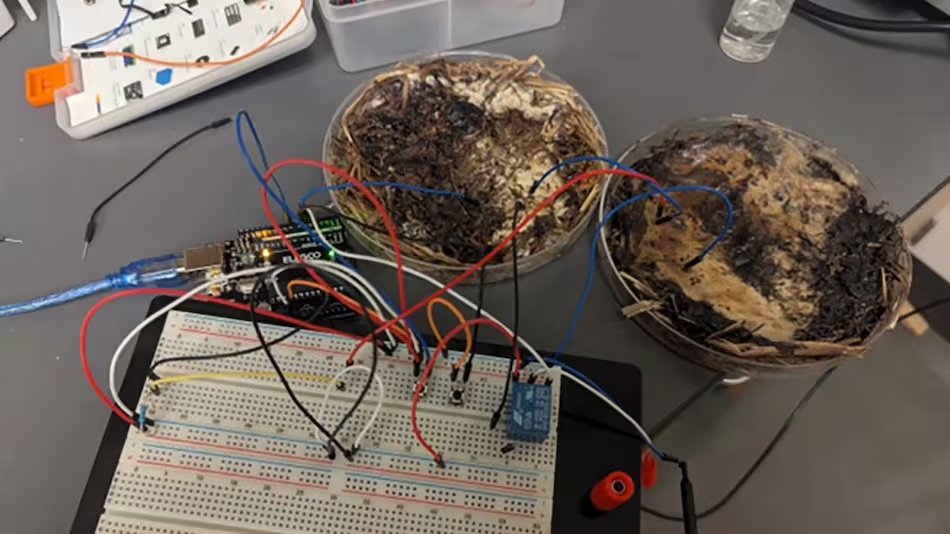In a small lab in Bristol, England, a group of researchers may have just rewritten what it means to be a computer. Their raw material? Mushrooms.
Scientists at the University of the West of England and Lancaster University have unveiled a working prototype of a living computer chip made not from silicon, but from the fibrous root network of shiitake mushrooms.
The team’s invention is part of an emerging field known as unconventional computing, which explores how natural materials—from slime molds to DNA—can perform calculations. But this mushroom-based hardware does something no other system has managed: it thinks, remembers, and heals itself.
Their experiments showed that mushroom-based devices could reproduce the same kind of memory behavior seen in semiconductor chips. They may also enable the creation of other eco-friendly, brain-like computing tools that cost less to produce.
“Being able to develop microchips that mimic actual neural activity means you don’t need a lot of power for standby or when the machine isn’t being used,” said John LaRocco, lead author of the study and a research scientist in psychiatry at Ohio State’s College of Medicine. “That’s something that can be a huge potential computational and economic advantage.”

How Scientists Tested Mushroom Memory
To test their capabilities, researchers grew samples of shiitake and button mushrooms. Once matured, they were dehydrated to preserve them and then attached to custom electronic circuits. The mushrooms were exposed to controlled electric currents at different voltages and frequencies.
“We would connect electrical wires and probes at different points on the mushrooms because distinct parts of them have different electrical properties,” said LaRocco. “Depending on the voltage and connectivity, we were seeing different performances.”
Surprising Results from Mushroom Circuits
After two months of testing, the researchers found that their mushroom-based memristor could switch between electrical states up to 5,850 times per second with about 90% accuracy. Although performance decreased at higher electrical frequencies, connecting multiple mushrooms together helped restore stability, much like neural connections in the human brain.
Qudsia Tahmina, co-author of the study and an associate professor of electrical and computer engineering at Ohio State, said the results highlight how easily mushrooms can be adapted for computing. “Society has become increasingly aware of the need to protect our environment and ensure that we preserve it for future generations,” said Tahmina. “So that could be one of the driving factors behind new bio-friendly ideas like these.”
Building on the flexibility mushrooms offer also suggests possibilities for scaling up fungal computing, said Tahmina. Larger mushroom systems may be useful in edge computing and aerospace exploration, while smaller ones could enhance the performance of autonomous systems and wearable devices.





